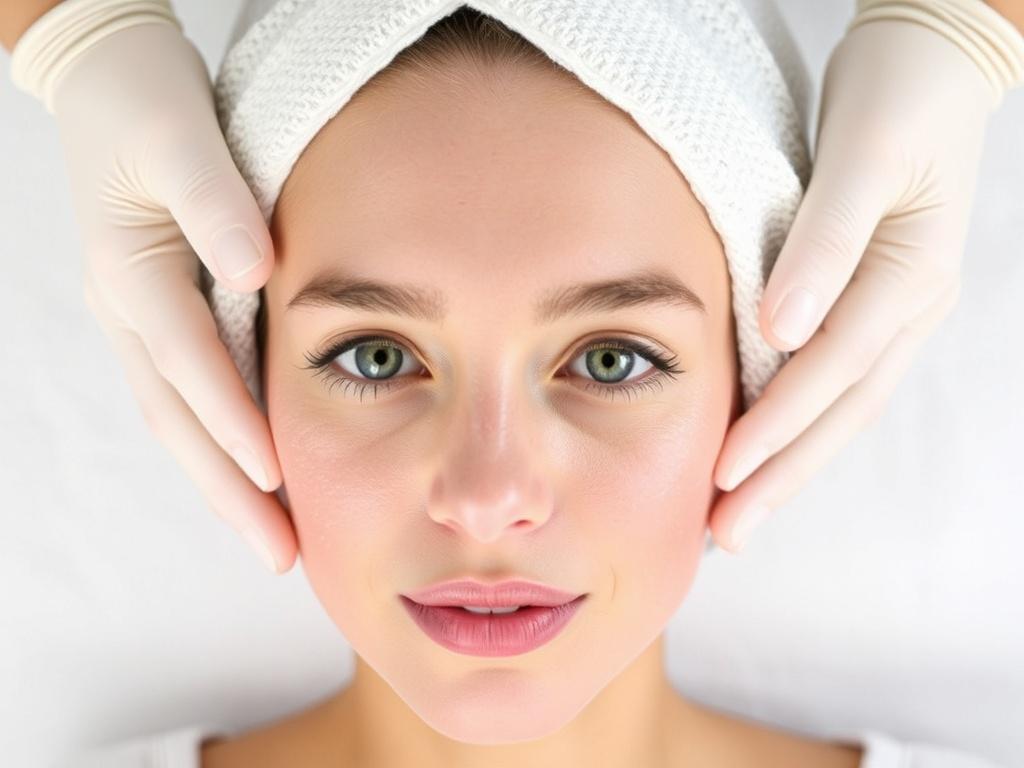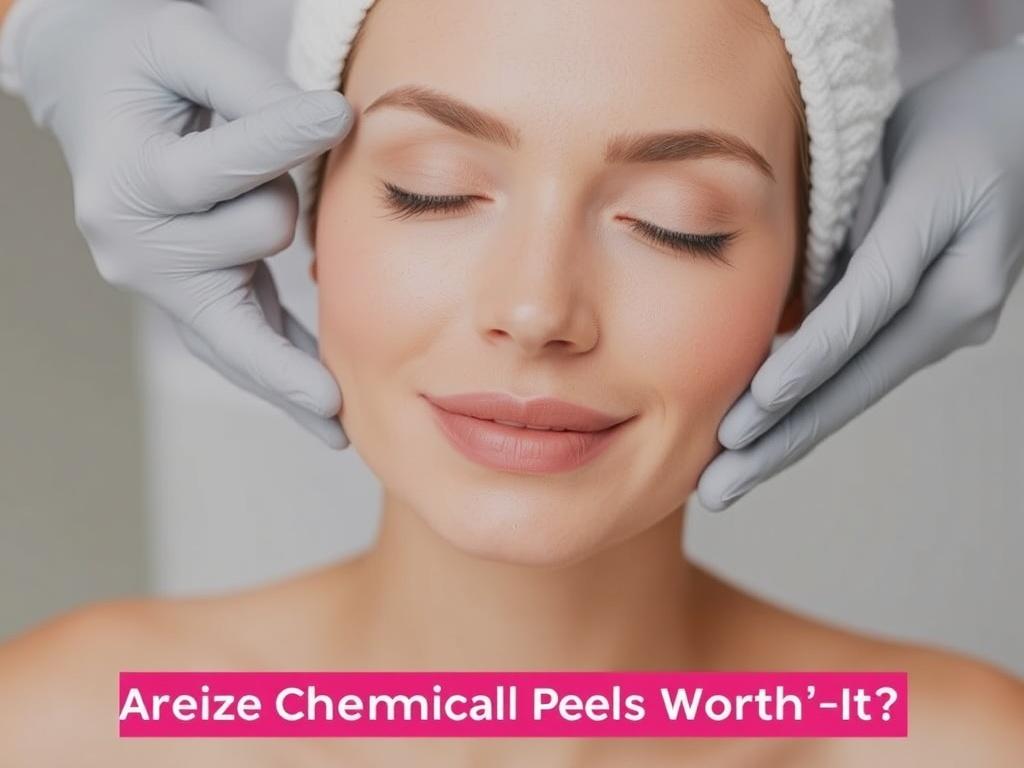Содержание статьи
- 1 What Is a Chemical Peel?
- 2 Types of Chemical Peels
- 3 How to Prepare for a Chemical Peel
- 4 What Happens During a Chemical Peel?
- 5 Recovery and Aftercare: What to Expect
- 6 Who Should Avoid Chemical Peels?
- 7 Are Chemical Peels Worth It?
- 8 Alternative Skin Treatments to Consider
- 9 Cost of Chemical Peels
- 10 Final Thoughts Before Booking Your Chemical Peel
- 11 Conclusion
Chemical peels have become one of the most popular skincare treatments in recent years, promising radiant skin, reduced wrinkles, and a smoother complexion. But what exactly are chemical peels, and what should you expect if you decide to try one? Are they truly worth the hype, or just another beauty trend? In this article, we will walk you through every aspect of chemical peels—from the different types available to the recovery process, possible risks, and how to decide if a chemical peel is right for you. By the time you finish reading, you will have a clearer understanding of this intriguing skincare treatment and be ready to make an informed decision.
What Is a Chemical Peel?
A chemical peel is a cosmetic procedure where a solution is applied to the skin to exfoliate its surface layers. The solution causes the top layers of the skin to peel off over several days, revealing fresher, smoother, and often more youthful skin underneath. Chemical peels vary in strength and depth depending on the ingredients used and the intended results. The goal is typically to reduce fine lines, wrinkles, acne scars, sun damage, hyperpigmentation, and uneven skin tone.
Chemical peels work by accelerating the skin’s natural exfoliation process. When the outer damaged layer sheds, the skin underneath has the chance to regenerate with fresher cells and a more even texture. This process can also stimulate collagen production, giving the skin firmer elasticity and a healthy glow. However, it’s essential to understand that chemical peels are medical treatments, not simple spa facials, so knowledge about the procedure, expectations, and aftercare is important.
Types of Chemical Peels
Chemical peels come in various types, mainly categorized based on how deeply they penetrate your skin:
| Type of Peel | Depth | Ingredients | What to Expect | Recovery Time |
|---|---|---|---|---|
| Superficial Peel | Light | Alpha Hydroxy Acids (AHAs) like glycolic acid, lactic acid | Gentle exfoliation, mild redness, little discomfort | Few days, minimal peeling |
| Medium Peel | Moderate | Trichloroacetic Acid (TCA), stronger glycolic acid solutions | Noticeable peeling and redness, possible swelling | Up to 1-2 weeks |
| Deep Peel | Deep | Phenol-based solutions | Significant peeling, redness, swelling, possible discomfort | 3-4 weeks or more |
Superficial peels are usually done for mild skin issues, maintenance, and a quick glow-up. Medium and deep peels are reserved for more stubborn skin problems like severe sun damage, deep wrinkles, and scar treatment. Because of the stronger chemicals involved, medium and deep peels require more preparation and careful post-peel care.
How to Prepare for a Chemical Peel
Getting ready for a chemical peel starts even before your appointment. Skincare preparation helps maximize the benefits and minimize side effects. Your dermatologist or skincare professional will typically recommend avoiding sun exposure and stopping certain skincare products like retinoids, exfoliants, or acne medications for at least a week before the peel.
It’s also a good idea to get a patch test to check for any allergic reactions, especially if you have sensitive skin or allergies. Hydrating your skin properly before the peel can help reduce post-procedure irritation. Remember, peeling off your skin’s top layer is a process that requires patience and care—preparing your skin gently will set the stage for the best results.
What Happens During a Chemical Peel?

On the day of your chemical peel, the process usually starts with a thorough cleansing to remove oil and dirt. Then, the chemical solution is applied evenly across your face using a brush, cotton ball, or gauze. Depending on the depth of the peel, the solution might stay on your skin anywhere from a few minutes to more than half an hour.
During the peel, you might feel a tingling, slight burning, or warmth. This sensation varies depending on the type of peel and your skin’s sensitivity. Some superficial peels leave minimal discomfort, while deeper peels can provoke a stronger burning sensation that is managed by the skincare professional. After the application, the chemical is neutralized or removed in a controlled way to stop the peeling process when the right point is reached.
Recovery and Aftercare: What to Expect

The recovery time and post-peel experience depend heavily on the peel’s depth. Here’s a general list of what to expect:
- Superficial peel: Mild redness and flaking within a few days. You can usually carry on with your daily activities quickly.
- Medium peel: Skin will crust and peel for about 7-10 days. Redness and swelling are common, so downtime is expected.
- Deep peel: Significant peeling, redness, and sensitivity can last for weeks. It may require medical follow-up and intensive skin care.
Proper aftercare is crucial to avoid complications and to help your new skin heal beautifully. Experts recommend avoiding sun exposure, using gentle moisturizers, and applying high-SPF sunscreen daily—even after the skin has healed. Your doctor might also prescribe topical treatments to reduce inflammation and prevent infection.
Common Side Effects and Risks
While chemical peels are generally safe when performed by a certified professional, they are not without risks. Some common side effects include:
- Redness and irritation
- Dryness and peeling
- Temporary darkening or lightening of the skin (hyperpigmentation or hypopigmentation)
- Sensitivity to sunlight
More serious risks, though rare, include infection, scarring, and allergic reactions. These risks increase if aftercare instructions are not followed, or if deeper peels are done incorrectly.
Who Should Avoid Chemical Peels?
Not everyone is an ideal candidate for chemical peels. People with certain skin conditions, such as eczema, psoriasis, or active infections, may need to avoid peels or consult their dermatologist first. Pregnant or breastfeeding women should also abstain due to potential risks of some chemicals used in peels.
Additionally, individuals with darker skin tones should proceed with caution. Chemical peels can sometimes cause uneven pigmentation or scarring in darker complexions. In such cases, milder peels and close supervision are advised.
Are Chemical Peels Worth It?

Deciding whether chemical peels are worth it depends on your skincare goals, budget, pain tolerance, and lifestyle. Let’s break down the key benefits and considerations.
| Pros | Cons |
|---|---|
| Can significantly improve skin texture and tone | Requires downtime, especially for medium and deep peels |
| Reduces fine lines, wrinkles, and acne scars | Potential side effects like redness and peeling |
| Stimulates collagen production for firmer skin | Costs can be high depending on peel type and number of sessions needed |
| Faster and often more effective than some topical treatments | Needs professional administration for safety |
If you want a quick fix for mild skin dullness or fine lines, superficial chemical peels might be worth it for their minimal downtime and visible results. For significant skin damage or aging signs, medium or deep peels offer more dramatic improvements but also require commitment, patience, and aftercare.
Alternative Skin Treatments to Consider
Chemical peels aren’t the only way to rejuvenate your skin. Depending on your concerns and risk tolerance, here are some common alternatives:
- Microdermabrasion: A mechanical exfoliation technique that removes dead skin cells and smooths skin texture with instant results but less dramatic than chemical peels.
- Laser resurfacing: Uses laser technology to promote collagen growth and improve skin tone but comes with significant downtime and cost.
- Microneedling: Tiny needles create micro-injuries that help rebuild collagen and fade scars or wrinkles over time.
- Topical retinoids and antioxidants: Non-invasive daily skincare options that gradually improve cell turnover and protect against environmental damage.
Each method has its pros and cons, and sometimes a combination of treatments may be most effective for your skin’s needs.
Cost of Chemical Peels
Pricing for chemical peels varies widely depending on the type of peel, the provider’s expertise, and geographic location. Here’s a rough idea:
- Superficial peel: $150–$300 per session
- Medium peel: $300–$700 per session
- Deep peel: $1,000–$3,000 or more per session
Since medium and deep peels often require medical supervision and greater aftercare, their costs reflect the increased complexity of treatment. Often, several sessions are recommended for best long-term results, so factor that into your budget.
Final Thoughts Before Booking Your Chemical Peel
Before committing to a chemical peel, it’s important to consult with a board-certified dermatologist or skincare professional who can assess your skin type and concerns. Customized recommendations tailored to your skin’s needs are essential to avoid complications and achieve the best outcome.
Be honest about your allergies, medical history, and expectations. Ask about the type of peel recommended, the expected downtime, and detailed aftercare instructions. Understanding what you’re getting into helps ease anxiety and primes you for success.
Tips for Choosing the Right Provider
- Look for qualified professionals with experience in chemical peels.
- Read reviews and ask for before-and-after photos of previous clients.
- Ensure the clinic has proper hygiene standards and licensed staff.
- Compare prices but don’t compromise quality for cost.
- Clarify follow-up procedures and availability for questions post-treatment.
Your skin deserves careful treatment from experts who prioritize safety as much as results.
Conclusion
Chemical peels offer an effective way to refresh your skin, addressing many common concerns from fine lines to sun damage. While they come with some downtime and possible side effects, choosing the right peel for your skin type and having proper aftercare can result in remarkably improved complexion and confidence. Whether chemical peels are “worth it” ultimately depends on your personal goals, budget, and willingness to commit to the recovery process. With careful preparation and professional guidance, chemical peels can be a rewarding step toward healthier, more radiant skin—making them a compelling option in the diverse world of skincare treatments.

